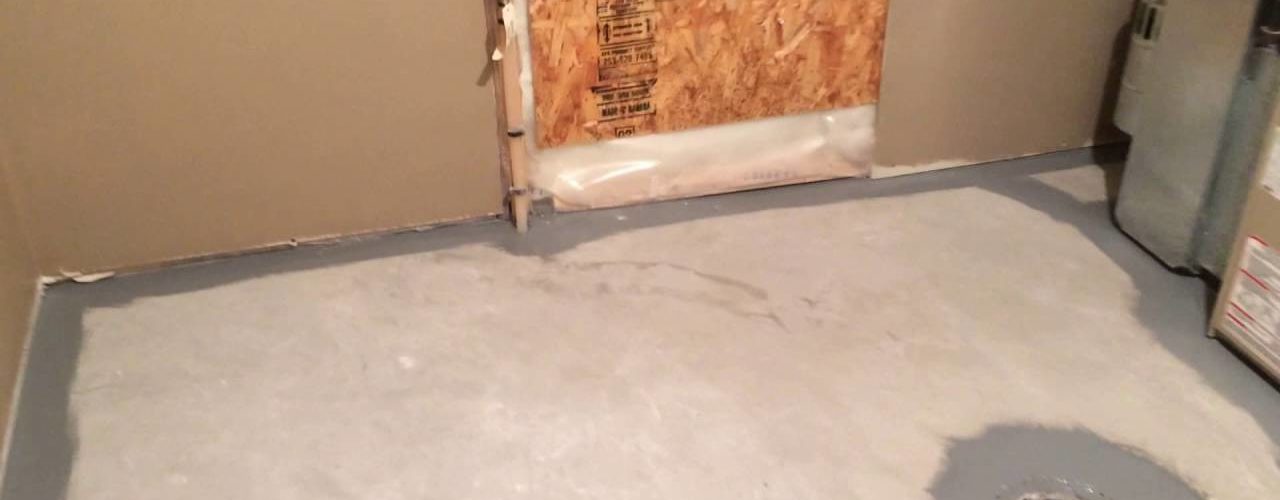Painting a basement floor requires working with the correct materials to ensure your home’s foundation has an effective, durable coating. An excellent way to add an element of color and design to your basement, painting the floor is relatively straightforward and can be easily accomplished in a weekend. Make sure to check with your local home supply store to purchase the correct primer, paint, and sealer for painting a concrete floor of this type. Once your supplies are purchased, it’s time to begin transforming your basement floor from concrete slab to painted masterpiece.
Steps to Painting a Basement Floor
Contents
1) Check for Any Signs of Dampness or Water
If the floor seems damp, condensation appears, or worse, standing water is visible on the basement floor, stop now and correct these problems. A damp basement floor can cause foundation problems or mildew at worst, and will not allow paint to adhere to the surface. Consult a contractor or builder to remedy these issues before painting the floor.
If there’s no sign of dampness and the floor is dry, then you’re good to go!
2) Smooth and Clean the Floor
If your basement already has an even, smooth layer of concrete, simply sweep and clean up the floor to remove any traces of dirt or debris that could interfere with a paint job. If there is small unevenness, bumps, or other minor unsightly details, consider sanding off those areas to create a smooth surface. Make sure the floor is completely dry before proceeding with primer.
3) Prime the Floor
Many home improvement stores now carry primer and paint specially formulated to work on industrial surfaces like garage and basement floors. Epoxy based primer will act as a sealer and base layer for the paint, forming a barrier that will stand up to wear and tear. Beginning with the end of the room farthest from the door, use a paint roller with a long handle to apply the primer, working from the area farthest away from the exit door to the edge. This way, you will avoid stepping in the primer while it dries.
4) Paint
After the primer has dried, you are ready to paint. Using an epoxy based or latex based paint, use the long handled paint roller in the same method, working with even strokes from the far side of the basement to the exit door. If you’d like to paint a pattern, wait for the first coat of paint to dry completely before applying the second coat of color. If you’d like deeper color or more coverage, apply a second coat of paint after the first coat has dried.
5) Seal
Combined with industrial sealer and water resistant paint, adding a sealer as a top coat to the basement floor adds another layer of protection. Sealing the floors also help ensure the longevity of the paint job. Make sure all the layers are completely dry before applying the sealer and that no trace of dampness exists. Apply a specially formulated industrial sealer to the top of the paint in the same method as described above. Repeat when dry until two full coats of sealer have been applied. Once the primer, paint, and sealer have dried and fully cured, the basement floor is yours to enjoy. By applying the correct products in an even application, the floor should withstand liquid spills, dirt, mildew, staining, and normal wear and tear.



